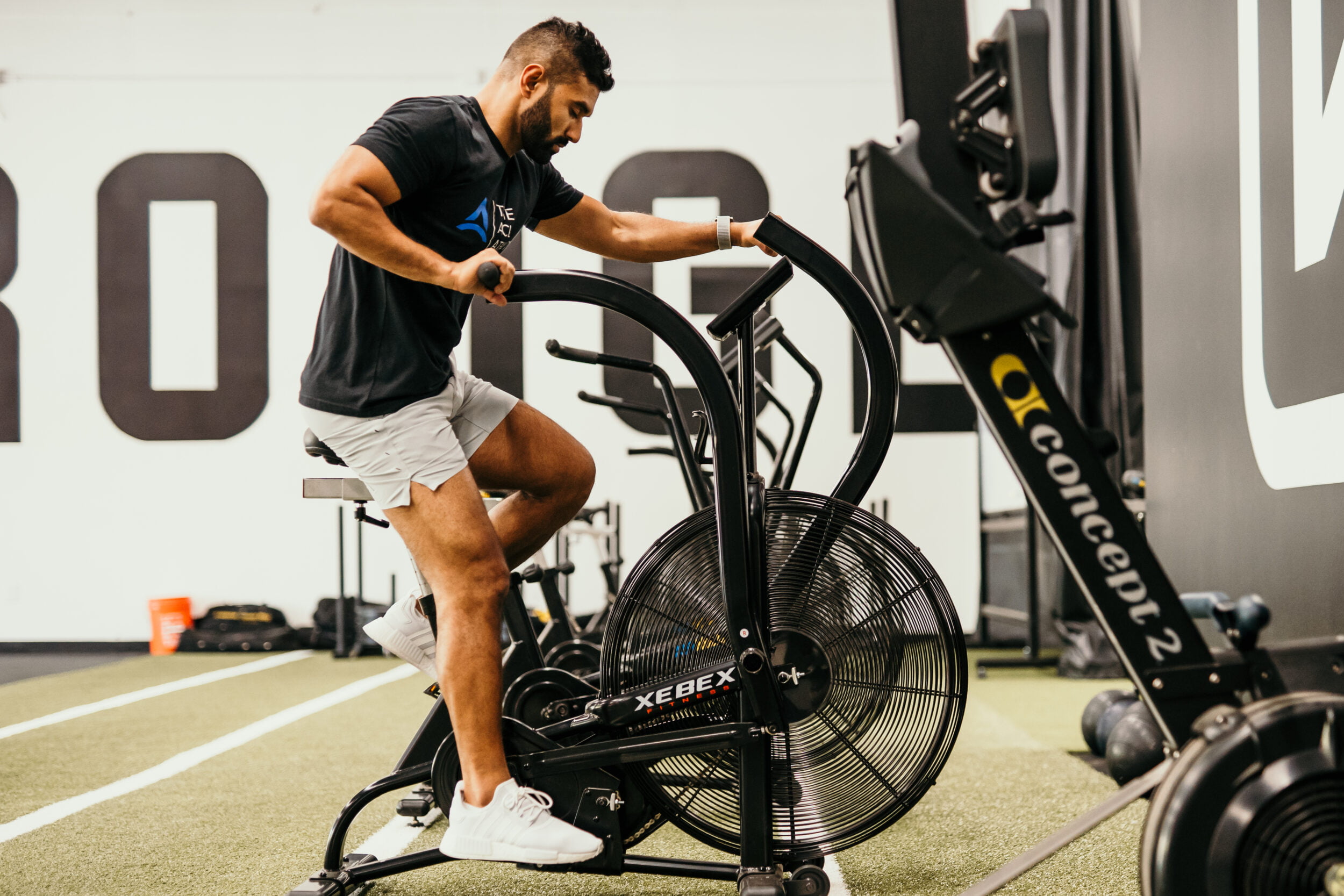This is the first of a two-part blog series pertaining to energy systems, conditioning, and how they pertain to ACL rehab. This post will serve as a primer for understanding energy systems.
Energy systems refers to the processes by which energy is generated and utilized by the body for various purposes and tasks.
Why do we care about energy systems and conditioning in the context of sport, performance, and ACL rehabilitation? For one, energy systems power all muscular work, which is necessary to engage in sport. The majority of sports require some degree of cardiorespiratory fitness, so by understanding the different energy system demands for different sports and activities, we can better understand how to best prepare you for the demands of that sport. Finally; cardiorespiratory function plays a crucial role in supporting multiple other physiological systems and long term health.
The 3 primary energy systems are:
- ATP-PCr System (Anaerobic Alactic System)
- Glycolytic System (Anaerobic Lactic System)
- Oxidative System (Aerobic System)
ATP-PCr
The ATP-PCr system is the immediate energy system that provides energy for high-intensity and short-duration activities. It does not require oxygen (is anaerobic) and relies on stored ATP (adenosine triphosphate) and PCr (phosphocreatine). This system can fuel activities lasting up to ~15 seconds of maximum effort. Activities like 100-meter sprint, weightlifting, or jumping rely heavily on the ATP-PCr system. This system has very limited energy stores, and fatigue occurs when ATP and PCr levels are exhausted. Recovery between bouts of high-intensity activity allows for PCr replenishment. This system is limited in its trainability, and is also quick to detrain (2-3 weeks). It is best trained and maintained with brief and frequent exposures.
Glycolytic
The glycolytic system provides energy for activities of moderate to high intensity and duration, typically lasting from 30 seconds to a few minutes. It largely operates without oxygen (meaning this system is also anaerobic) and relies on glucose breakdown via glycolysis for ATP production. Activities like short-distance running events and those involving repeated high-intensity efforts like soccer, football, and basketball rely heavily on the glycolytic system. The capacity of the glycolytic system is greater than that of the ATP-PCr system, but is generally slower to recover. The duration and intensity of the activity at hand plays a large role in how fast glycogen system stores are depleted. The glycolytic system is fairly trainable, and adapts at a faster rate than the oxidative system (~3-4 weeks).
Oxidative
The oxidative system is the primary energy system used during low to moderate intensity activities lasting longer than a few minutes. It relies on oxygen (is aerobic) and primarily utilizes carbohydrates and fats for ATP production. Aerobic metabolism occurs in the mitochondria and involves the breakdown of carbohydrates and fats through processes like aerobic glycolysis, beta-oxidation, and the Krebs cycle to produce ATP. Examples of activities that primarily utilize the oxidative system are long-distance running, cycling, swimming, and sustained aerobic exercises lasting more than a few minutes. The oxidative system has a virtually unlimited capacity for ATP production but operates at a slower rate compared to the ATP-PCr and glycolytic systems. This system is limited by the rate of oxygen supply/consumption, enzymes, and substrates associated with aerobic ATP production. The aerobic system is very important for recovery purposes of all three systems.The aerobic system is highly trainable, although it can take 4-8 weeks to see initial adaptations, and up to 3-4 months to see significant adaptations with consistent training.
Interplay of Energy Systems
It’s important to note that these systems don’t exist and operate in isolation, but rather interact and contribute to energy production depending on the demands of the activity and capacity of the system. Many team sports like football, soccer, and basketball have unique aerobic and anaerobic demands due to their intermittent nature. This quality is often referred to as Repeat Sprintability, which can be defined as short, high-intensity intermittent actions mixed with bouts of sustained low-intensity activities. An example would be a short, intense 6 second sprint followed by incomplete recovery of 45 seconds of lower intensity jogging or running. In sports that have high repeat sprintability demands all 3 systems are used, but the extent to which they are relied upon is dependent upon factors like intensity, duration, and work-to-rest ratio.
Deconditioning
ACL reconstruction results in decreased ability to engage in practice, training, or conditioning. With prolonged inactivity, all three energy systems can become detrained or deconditioned, meaning that they become less effective when called upon. Aerobic deconditioning can happen as quickly as 2-4 weeks after cessation of regular training. If we know that it takes 4-8 weeks to see improvement in aerobic conditioning, why is energy system development typically left unaddressed until the later stages in rehab? This leaves many athletes underprepared for the demands of returning to practice and performance.
Stay tuned for part 2, where we’ll discuss conditioning throughout the ACL journey.

